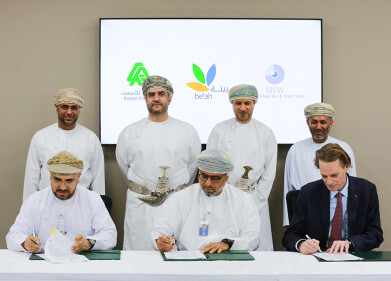Waste management
How Much Plastic Will End Up in the Ocean?
Aug 17 2020
The amount of plastic entering our seas and oceans could almost triple within 20 years, according to new research carried out by The Pew Charitable Trusts in conjunction with SYSTEMIQ. Using six different computer models, the authors of the study determined that plastic pollution could reach a staggering 29 million tonnes per annum by 2040 if no meaningful action is taken.
However, there was also some positive news to balance out those ominous findings. If existing technological solutions and best practices are adopted on a global scale, the amount of plastic reaching marine environments could be slashed by up to 80%. However, that optimistic outcome will only be achieved if real systemic change is made across the board.
A tidal wave of plastic pollution
At present, it’s estimated that 11 million tonnes of plastic find their way into the ocean each year across the globe. Since plastics take hundreds of years to degrade in the environment – and break down into potentially even more dangerous microplastics in the meantime – that figure is already concerningly high for the myriad flora and fauna which lives beneath the waves.
However, the research team found that in a “business as usual” scenario, where little to no changes are implemented in the production, consumption and disposal of plastic, 29 million tonnes of the stuff could be infiltrating the ocean by 2040. That means the total amount of plastic in the sea could surpass 600 million tonnes within two decades, which is equivalent to the weight of three million blue whales.
Tangible change within reach
However, the best-case scenario of the study, termed the “systemic change” scenario, foresees that figure being slashed by more than 80%. In order to achieve that goal, it would take individual efforts from all citizens on the planet to curb their plastic pollution habits, but more importantly, top-down change affecting the industries which produce, process and dispose of plastic.
In particular, it’s projected that around four billion people will not enjoy access to organised waste collection services by 2040 unless wholesale changes are introduced. Indeed, to ensure that everyone’s waste is taken away and properly disposed of, it would mean making that service available to an additional half a million people every day for the next 20 years – a tall order by anyone’s measure.
A blueprint for success
Unperturbed by those challenges, the authors of the report have identified eight concrete ways in which plastic pollution can be successfully tackled. These include reducing plastic production and consumption, replacing single-use items with more sustainable alternatives, optimising the materials used in items to make them recyclable and maximising waste collection schemes in disadvantaged communities, among others.
What’s more, the economic benefits of introducing those changes are just as impressive as the environmental ones. In addition to cutting greenhouse gas emissions by a quarter, the best-case scenario would also create 700,000 jobs and generate fiscal savings of up to $70 billion for governments across the globe by 2040. “’Breaking the Plastic Wave' leaves no viable excuse on the table; we have today all the solutions required to stem plastic flows by more than 80%,” explained Martin Stuchtey of SYSTEMIQ. “What we now need is the industry and government resolve to do so."
Events
Apr 08 2025 Targi Kielce, Poland
Apr 08 2025 Bahrain
Apr 10 2025 Beijing, China
Apr 10 2025 Beijing, China
Apr 15 2025 Moscow, Russia














